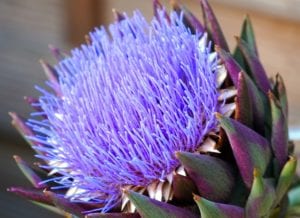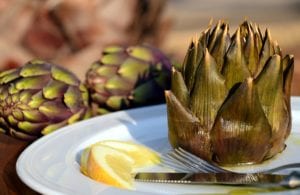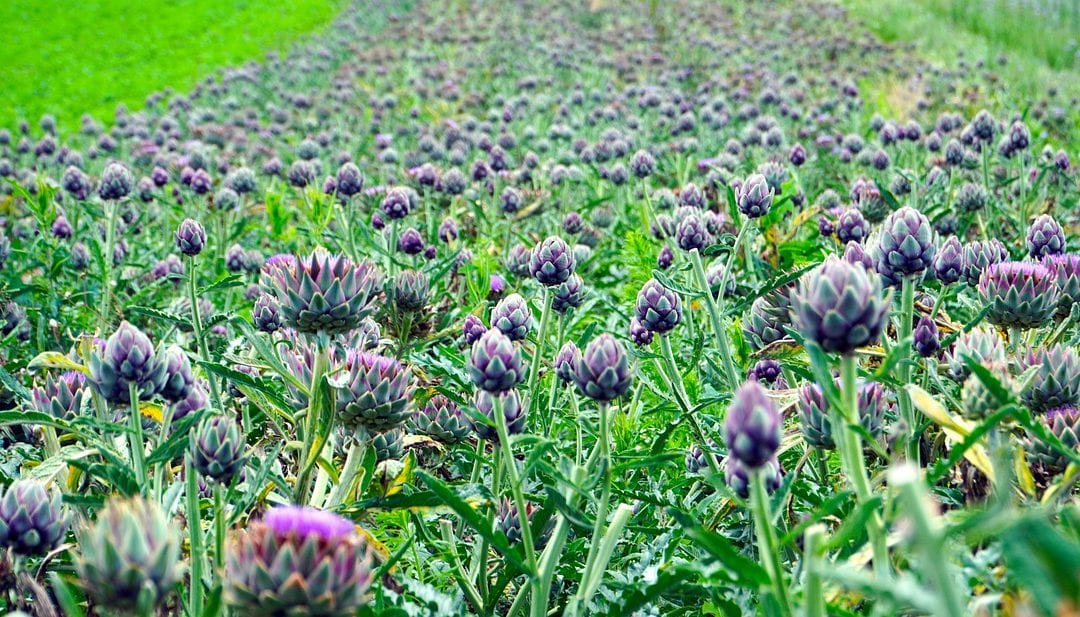If you’ve never tried growing artichokes, I think you have been missing out. Not only are artichokes beautiful specimens in the garden, they are also an exciting, more exotic, vegetable choice. The Green Globe artichoke, particularly, is such a beautiful plant that sometimes it is grown purely as an ornamental, but in doing so, you’d be missing out on the buttery, nutty, taste of the tender veggie.
The artichoke may not be one of the more common vegetables that you are use to planting, but don’t let that dissuade you. This can be the season of new beginnings. Growing these plants is truly not a difficult task. You’ll just need to keep a few things in mind like: space, soil amendment, water, and sun exposure.


4 Growing Tips for Artichokes
1. Spacing for Artichokes
Artichokes grow about 3 ft. high and 4 ft. wide and will need plenty of room to stretch out in your garden. If planting multiple transplants space them at least 3 feet apart if possible. Artichokes have deep roots, so make sure you have ample soil depth (17-20 inches minimum). Worried you don’t have room in your garden for one of these bad boys? A container large enough for an artichokes mature size, filled with a premium potting soil (like FoxFarm Happy Frog), will suffice.
2. Soil and Water for Artichokes
When planting artichokes, a soil pH range of 6.5-8.0 is ideal. Soil amended with compost and other rich, organic matter will give your veggies the ideal environment to grow in. Artichokes need consistent, regular water, about 1-1 ½ inch per week and more at bud set in spring. In warm, mild, zones such as ours (8a-9b), these plants can be grown as a perennial or biennial.
3. Sun Exposure and Temperature for Artichokes:
Artichokes are usually planted in fall/winter for a spring harvest. A location that gets plenty of morning sun but afternoon shade (protection after 2:30 p.m.) is ideal since these plants don’t care too much for our hot, humid summers. By giving them some reprieve from the scorching sun in summer, your artichokes will survive the summer and thrive in the mild fall and winter months. Artichokes can usually handle our mild winter just fine, but if temperatures are predicted to be under 30°F, freeze protection needs to be used.
4. Harvesting Artichokes:
Once planted, artichokes take around 105-125 days from transplants to maturity. Your main harvest should happen around late April to early-May. Harvest the large, main heads from the middle of the plant. Secondary baby heads will appear that can also be harvested for consumption. To ensure the best flavor and most tender leaves, harvest artichoke buds when they are still tightly closed and the bottom scales are just starting to pull away.
If you are growing artichokes for flowers, leave the buds on the plant to open up into the gorgeous blooms. The flowers are truly a sight to behold. With hues ranging in color from electric blue to practically neon purple, the blooms make a stunning display in the garden and are popular in dried floral arrangements. Beneficial insects like bees and other pollinators will be attracted to the large, spectacular flowers if they are allowed to bloom.
Once you’ve harvested either the fruits or the flowers of your artichokes, you can cut the plant back to soil level. Continue to water regularly and by the following fall, new sprouts will have developed and matured and your artichoke will be ready to produce again. You’ll probably find that your artichokes will become more prolific the second year of growing, increasing in productivity each year.
When your plants start producing fruits that are smaller than you’d like (probably around 4-5 years), you can divide the crowns and replant them to make new transplants


A favorite way to eat an artichoke is to simply steam the whole head, then systematically remove each leaf, dip them into butter and scrape the tender, juicy flesh off the leaf with your teeth. It’s a ritual almost like unwrapping a present. You delight in the wrapper and bows (the leaves), and then get to the actual gift (the heart of the artichoke). The heart is a tender morsel that also tastes wonderful dipped in butter or a remoulade.
Hope this has inspired you to try something new. Artichokes are gaining notoriety in the landscape; think it’s time to get one for yourself?
-The Happy Gardener, Lisa Mulroy

